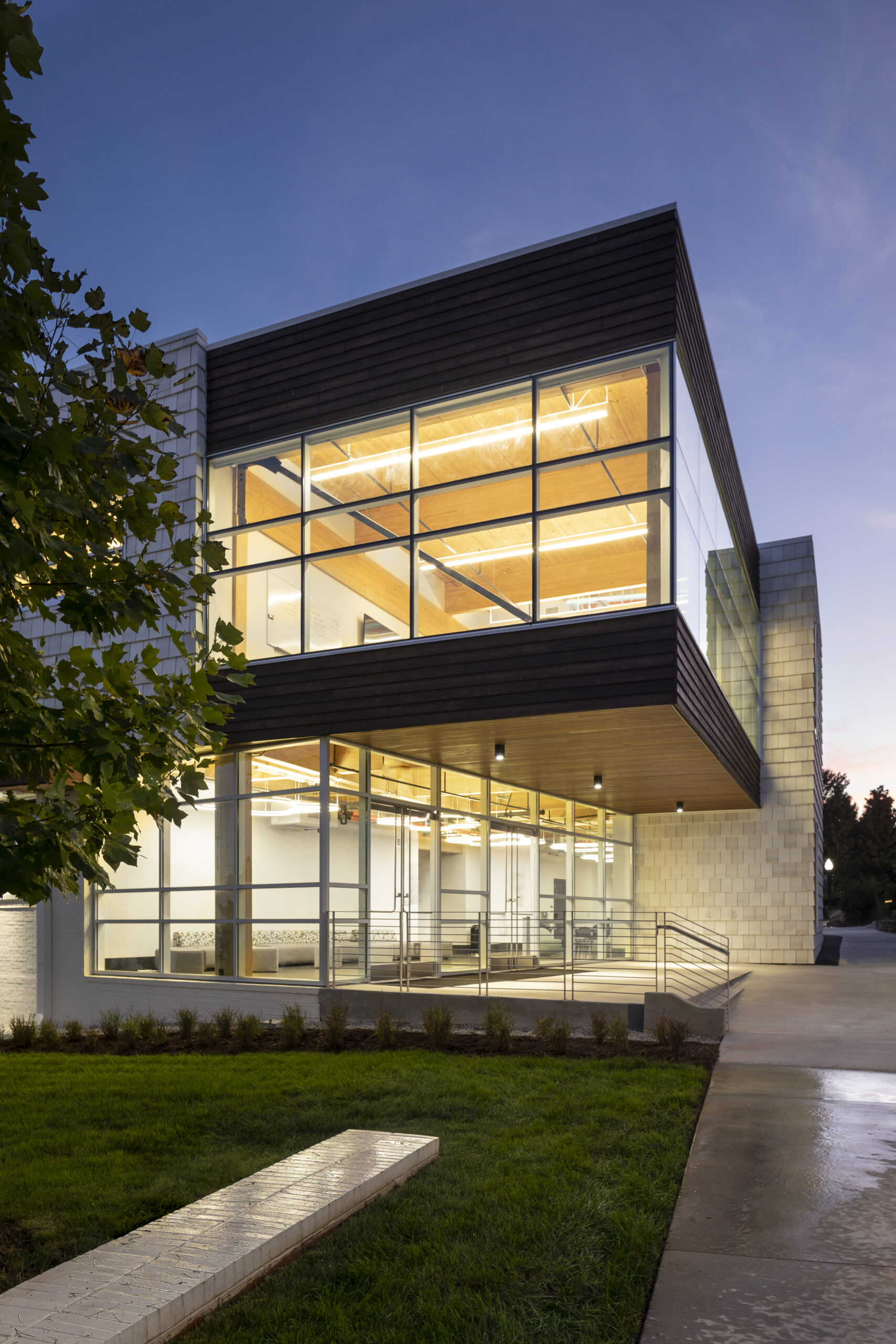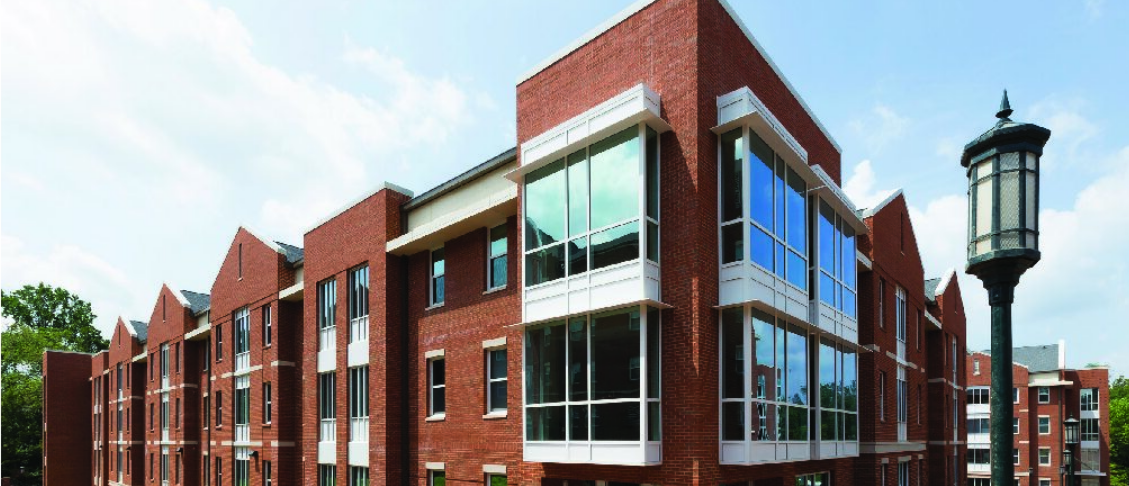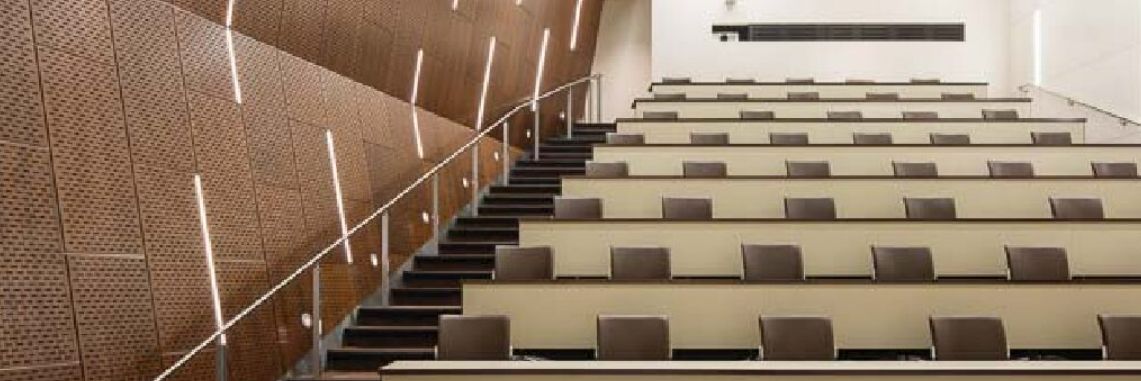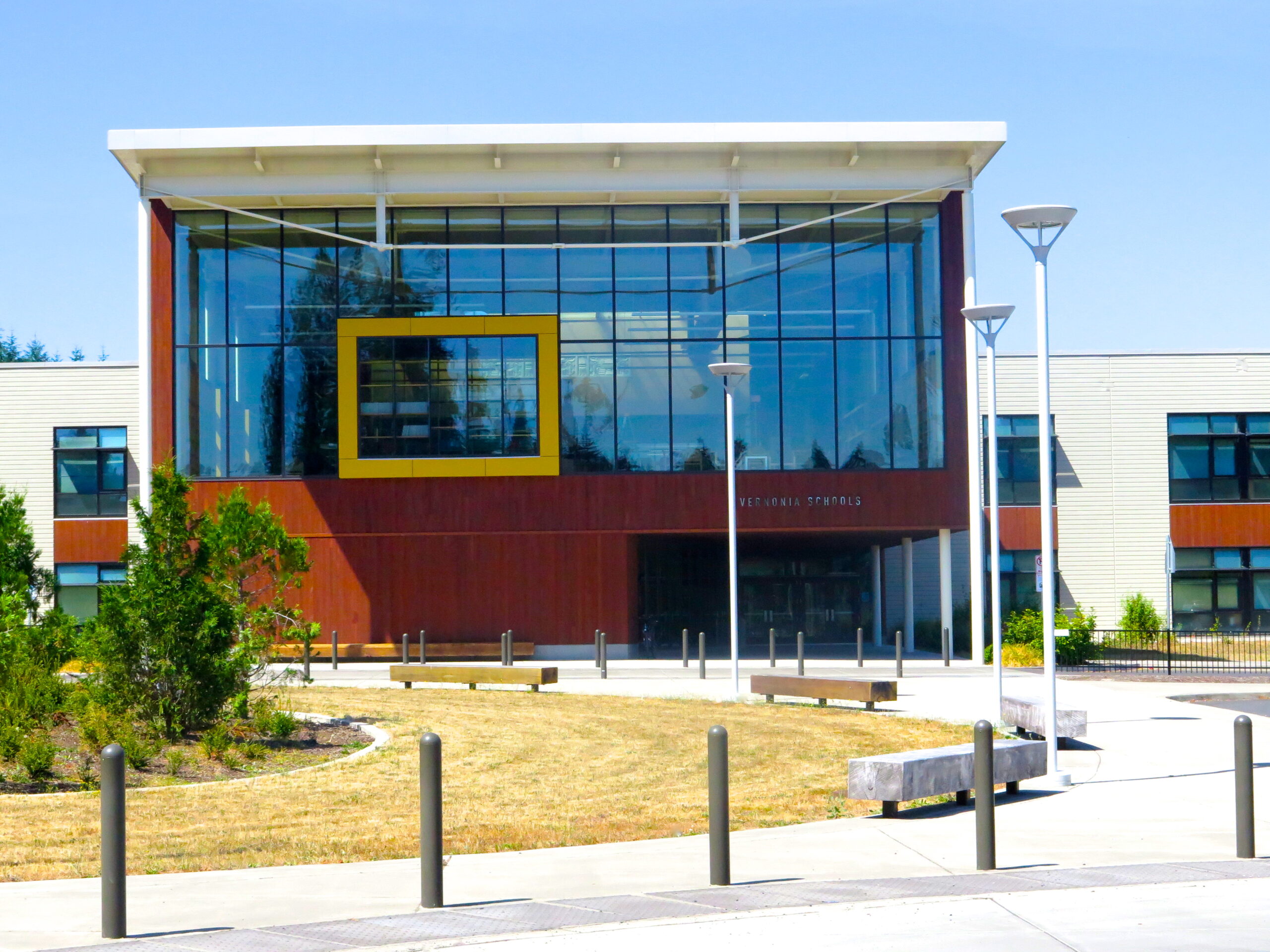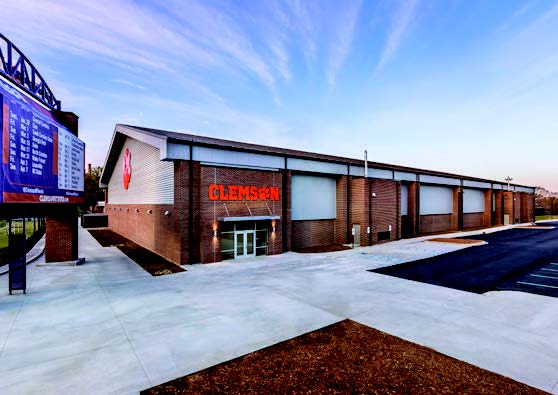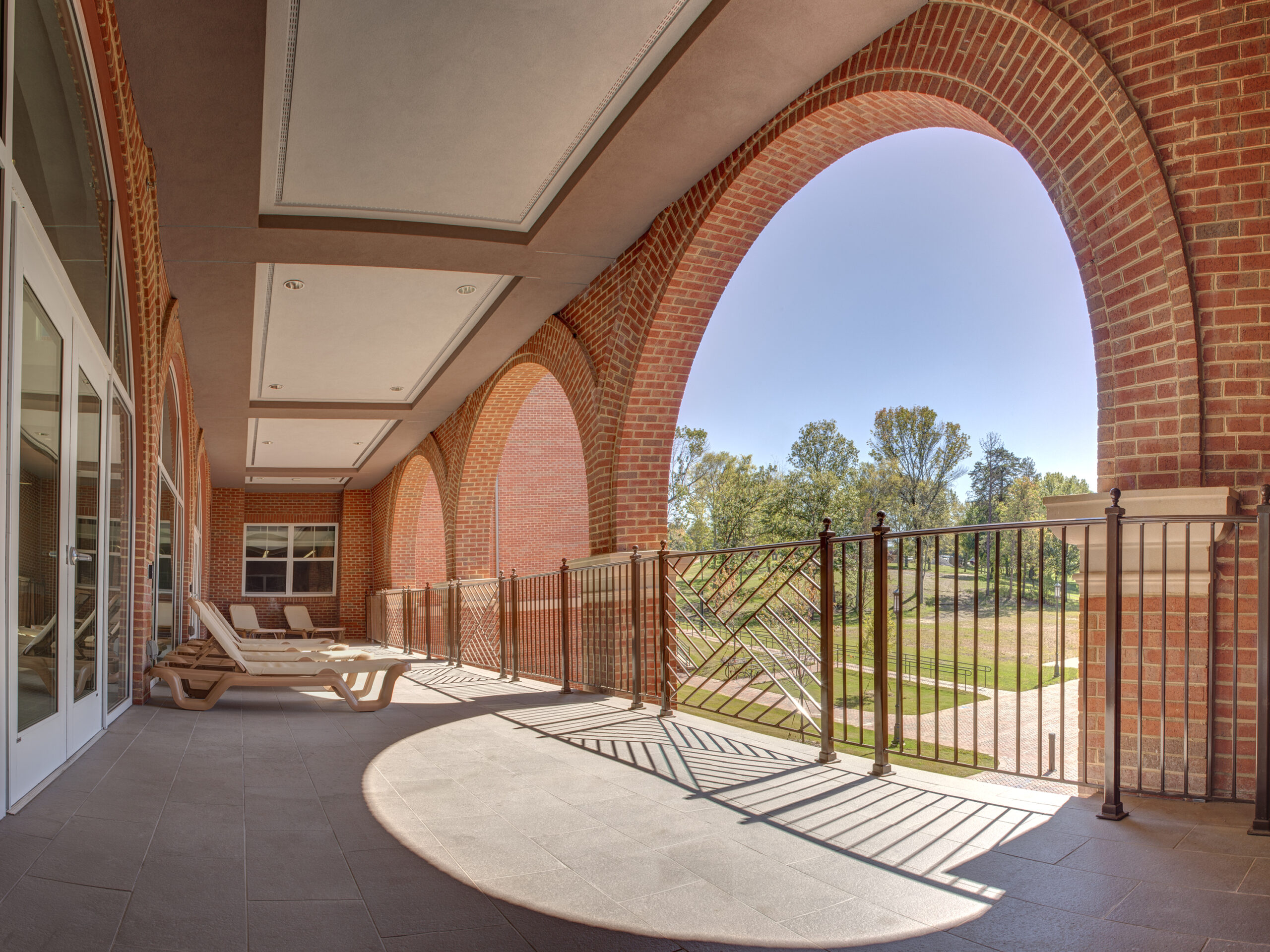McMillan Pazdan Smith, the architectural firm behind the project, proposed CLT to Wofford College primarily due to the material’s compatibility with the ethos of the building. For a facility centered on environmental studies, using CLT, installing a green roof, implementing rainwater capture techniques, and other sustainable strategies simply made sense.
“For years we dreamed of working in a sustainable space, where our surroundings, themselves, could be part of our teaching and research,” said Dr. Kaye Savage, former head of the Wofford College Environmental Studies Department. “The Chandler Center is that space.”
To demonstrate the project’s environmental stewardship, the team selected Green Globes® certification.
Early on, the team realized that the project was in line to attain Two Green Globes, so they set their sights on a higher target. “We worked with our Green Globes Assessor to improve our score,” recalls Charles Kneisley, assistant project manager at Robins & Morton Construction. “Our assessor offered critiques and innovative ways to achieve points we didn’t think were possible.”
“For years we dreamed of working in a sustainable space, where our surroundings, themselves, could be part of our teaching and research. The Chandler Center is that space.”
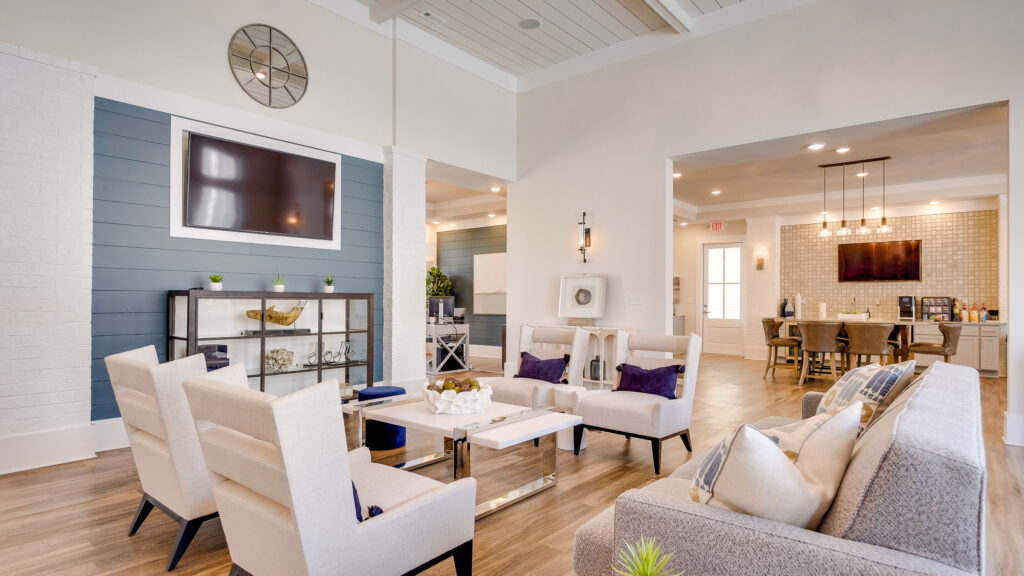
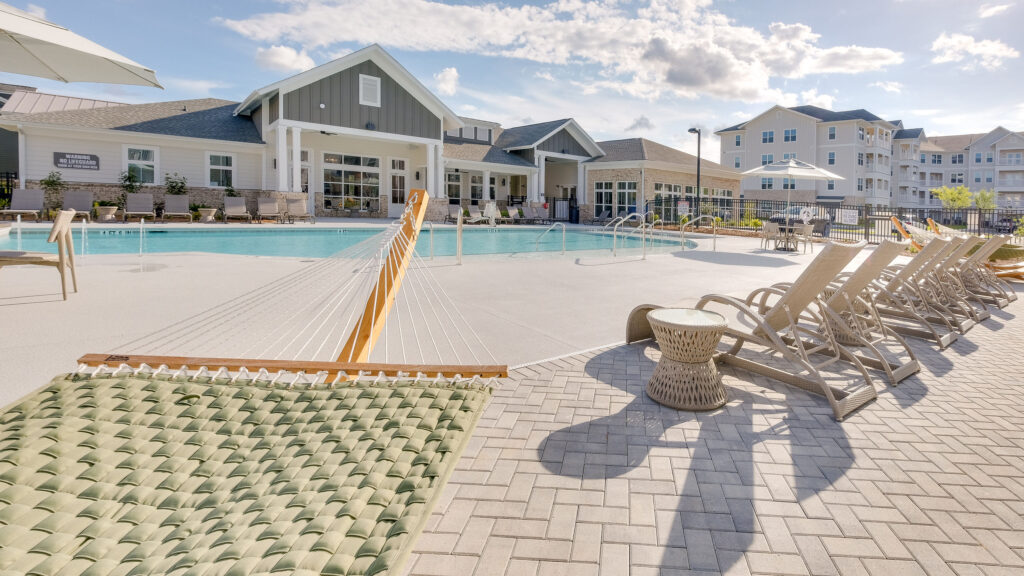
Notable sustainability measures elevated the project’s final rating:
- The cross-laminated timber structural system using Alabama-sourced yellow pine eliminated pollution from steel production.
- The team documented a definitive water reduction of 41%.
- Onsite rainwater is harvested and collected for irrigation.
- A low-maintenance green roof garden slows stormwater runoff.
- The roof contains a full array of photovoltaic panels.
CLT’s Role in Achieving Three Green Globes
McMillan Pazdan Smith had previous success with CLT in South Carolina’s Lowcountry, an area challenged by groundwater, humidity, and rainfall, and knew that the material’s propensity to flex increased its resiliency.
The use of CLT significantly contributed to the building’s sustainability, health and wellness, and resilience features. Research highlights CLT’s environmental advantages over carbon-intensive construction materials such as concrete and steel. Further, CLT adds a natural aesthetic amid the glass, steel, and concrete prevalent in modern construction. Studies even suggest that wooden interiors can reduce occupant stress, a meaningful benefit for students in particular.
Cost considerations, while presenting a slight initial premium compared to conventional construction materials, were outweighed by the long-term benefits. The educational and sustainability values of CLT justified these costs, as evidenced by a tripling in enrollment in the Environmental Studies program since the Chandler Center’s opening. Offsite modularization was minimal, and the onsite team was able to quickly and safely assemble everything with the use of a small crane. Previous studies conducted elsewhere have shown that CLT projects can be faster to construct, and require less construction traffic and fewer workers on site.
The Chandler Center earned a prestigious Three Green Globes certification, solidifying its status as a sustainable, healthy, and resilient building. The use of CLT, alongside other sustainability strategies, contributed significantly to this rating. Beyond that, the Center’s calming and natural ambiance enhances the overall well-being of students and faculty.
“The fact that we had a direct connection to the assessor is unique to Green Globes,” Kneisley says. “He made the process smooth – we just had to do the work. And when we told Wofford College we were going to get Three Green Globes, they were ecstatic.”
